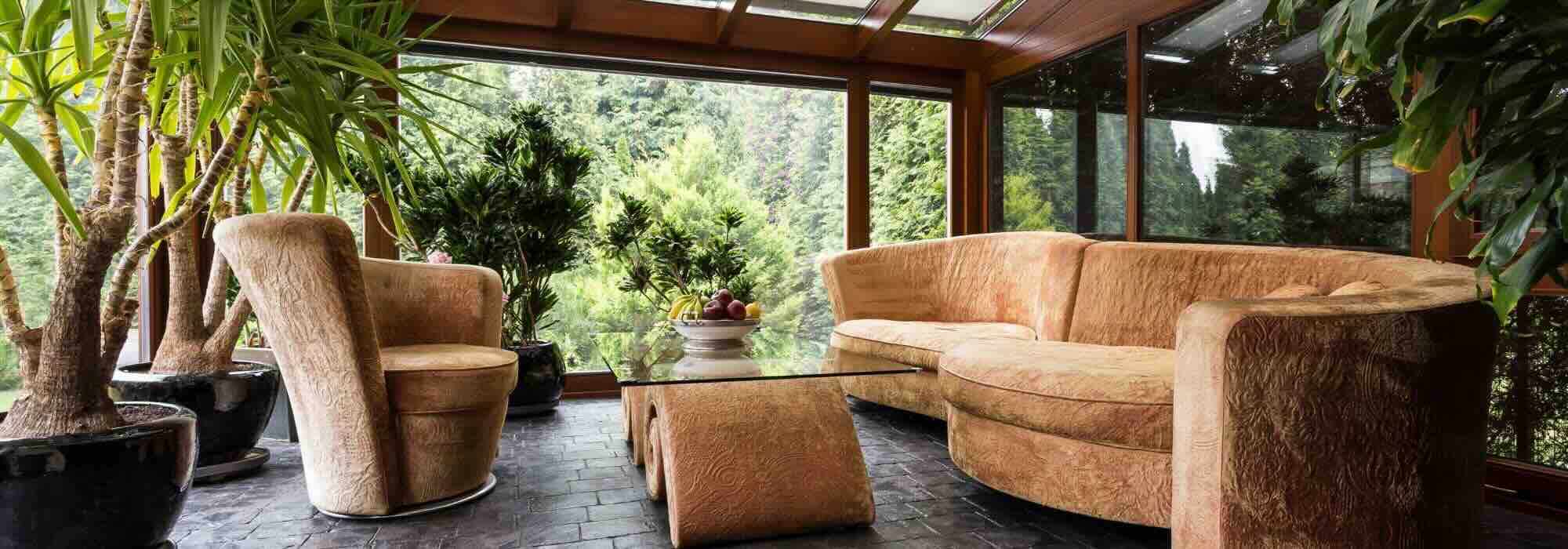
Ideal indoor plants for a conservatory
An indoor garden, even without heating
Contents
Installing indoor plants in a conservatory is an excellent idea: it’s a bright, sheltered space, often ideal for growth. But beware: depending on whether it’s heated in winter or not, conditions can vary significantly. Cool temperatures, dry air, summer overheating… not all indoor plants can adapt. Here’s a selection of robust and decorative species to choose from based on the type of conservatory, creating a lasting and harmonious green space.
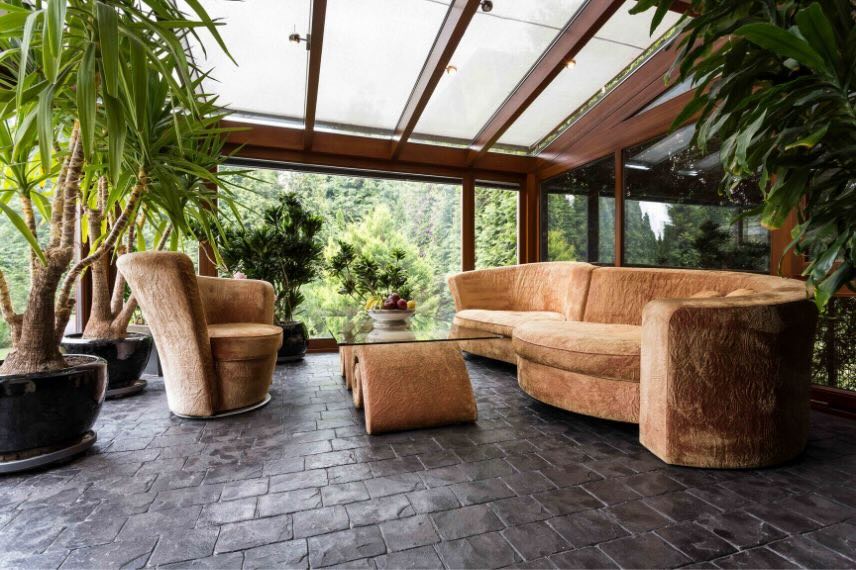
Essential Tips for Successfully Growing Indoor Plants in a Conservatory
Managing light and direct sunlight
Most plants love light, but not necessarily direct sunlight, especially behind glass where rays can be amplified. In summer, a south or west-facing conservatory can quickly become an oven:
- Installing light voiles, blinds or natural shading (climbing plants, green curtains) helps filter the light.
- Some plants tolerate full sun (succulents, cacti), but many prefer bright indirect light.
Watch out for extreme temperatures in your conservatory, especially in summer
Contrary to popular belief, the main danger in a conservatory isn’t always the cold… but the heat. In summer, temperatures can easily exceed 30 to 40°C in direct sunlight, especially if poorly ventilated. Above 30°C, most plants suffer: photosynthesis slows, leaves soften, some burn or dry out.
It’s therefore crucial to:
- ventilate regularly (open doors and windows during cooler hours),
- avoid black pots that overheat,
- and group sensitive plants in shade during heatwaves.
What about winter?
Depending on whether it’s heated or not, a conservatory will behave like a normal room… or an unheated greenhouse.
- In a heated conservatory, temperatures stay above 15°C: nearly all houseplants can live there year-round.
- In an unheated conservatory, temperatures may drop to 10°C, 8°C or lower at night: many tropical plants won’t tolerate this.
- It’s essential to know the minimum winter temperature to select suitable plants or protect more fragile specimens.
Adjust watering according to season
Air in conservatories is often drier than in normal rooms, especially in summer.
- In warm periods, monitor water needs closely: potted plants can dry out in days, sometimes just one day.
- In winter, reduce watering significantly – most houseplants dislike cold dampness.
Good practice: always check the compost before watering. Slight water stress is better than excess moisture in an enclosed space.
Choose containers and drainage wisely
- Opt for terracotta pots: they allow better root respiration and reduce rot risks.
- Ensure each pot has proper drainage (hole at base, non-watertight saucer), especially in winter or for succulents.
- For large plants, consider castors or mobile stands to easily reposition them according to light or season.
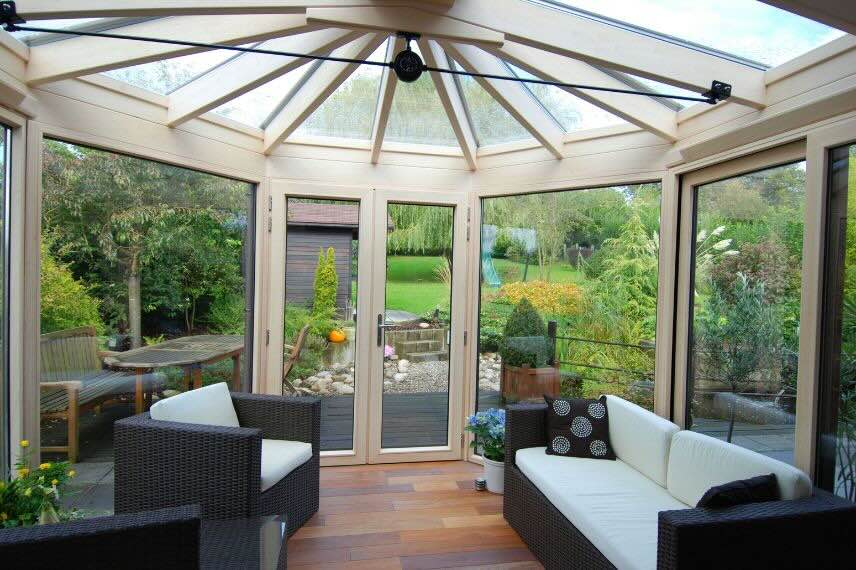
A conservatory can accommodate houseplants provided they’re chosen for heat and dry atmosphere tolerance
Ideal indoor plants for a heated conservatory
A heated conservatory, bright and kept above 15°C in winter, offers an almost tropical environment… in appearance. But unlike a greenhouse or a humid room, the air is often drier than in a living room, especially in summer when temperatures rise. Here is a selection of decorative, robust plants well-suited to this type of environment.
Bird of Paradise – Strelitzia reginae
The strelitzia is one of the stars of bright conservatories. Its long, broad, and well-cut leaf immediately evokes tropical climates. It appreciates constant warmth, bright light, and tolerates dry air quite well, making it perfectly suited to a heated conservatory. In ideal conditions, it may even produce its famous orange and blue flowers, which are very exotic.
Croton – Codiaeum variegatum
With its leathery leaves variegated in red, yellow, green, and orange, the Croton is a highly ornamental plant that loves direct or very bright light. It dislikes sudden temperature changes but thrives in a warm and stable environment. Unlike other tropical plants, it tolerates dry air quite well, provided it receives enough light.
Monstera
A classic for interiors, the Monstera deliciosa thrives particularly well in a heated conservatory, where it can benefit from abundant light without overly harsh direct sunlight. This plant is not demanding when it comes to ambient humidity. It grows quickly and can reach very imposing dimensions.
Rubber Plant – Ficus elastica
The Ficus elastica is an excellent choice for conservatories where humidity remains moderate. Its thick, glossy leaf allows it to withstand dry air well, provided it is exposed to bright indirect light. It requires little maintenance: occasional leaf cleaning and sufficient space to grow. It can become large but remains easy to control with gentle pruning.
Hibiscus
The hibiscus rosa-sinensis is a flowering plant that truly loves warmth and sun. In a heated conservatory, it can bloom almost all year round if it receives plenty of light. It appreciates regular watering but without overly humid conditions, making it an excellent choice for this setting. A well-exposed conservatory will provide the ideal climate for it to produce its large trumpet-shaped flowers, red, pink, or yellow depending on the variety.
Philodendrons
Not all philodendrons are equal when it comes to tolerating dry air. Some varieties are less susceptible, (such as ‘Congo’, ‘Imperial Red’) with thick or broad leaves, which do very well in a heated conservatory. They love light and warmth but do not require high ambient humidity to stay beautiful.
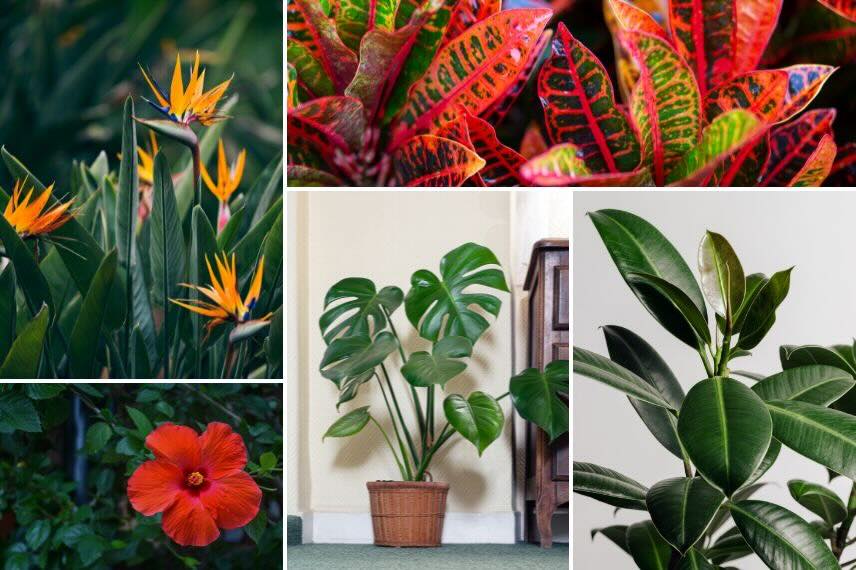
Clockwise: Strelitzia, Croton, Ficus elastica, Monstera deliciosa, Hibiscus rosa-sinensis
Ideal Indoor Plants for an Unheated Conservatory
An unheated conservatory provides a bright environment, sheltered from frost but subject to strong temperature variations. In winter, temperatures often drop to between 5 and 10°C, which rules out most tropical plants. On the other hand, it’s the perfect place for succulents, cacti, or certain perennials that enjoy bright light and a cool resting period.
Cacti and Succulents
Cacti and succulents are undoubtedly the best-suited plants for an unheated conservatory. Cactus genera such as Echinopsis, Mammillaria, or even Polaskia tolerate cool temperatures easily, as long as they are planted in well-draining substrate and kept dry during winter. They benefit from a winter dormancy essential for future flowering. A bright conservatory offers them an ideal setting, provided summer heat is managed carefully, as it can quickly become excessive.
Among the succulents, Aloe vera, Crassula (notably Crassula ovata), Kalanchoe, Portulacaria afra, and certain Euphorbias adapt very well to the intense light and dry air of an unheated conservatory. They fear winter humidity more than cold. As long as watering is suspended in winter, they pass the cold season without difficulty. Some can even withstand temperatures close to 5°C if kept completely dry.
Senecio (rowleyanus, crassissimus, herreianus…)
These unusual succulents come in varied forms: pearls, rubies, flat or rounded leaves. They all share a high tolerance for strong light and dry air, as well as good resistance to moderate cold, provided they are kept dry. They are perfect in hanging baskets or elevated pots.
Indoor Saxifrage
Some saxifrages grow very well indoors and thrive in a cool conservatory. They form a lovely carpet of round leaves, veined or variegated, and spread via small stolons. This plant enjoys soft or filtered light and tolerates cool conditions. It requires little watering in winter and remains decorative year-round.
Clivia
The Clivia is an excellent candidate for an unheated conservatory. It needs a cool winter dormancy (around 10°C) to flower in spring. Its ribbon-like foliage is evergreen, and its orange or red flowering is spectacular. It requires little water in winter and appreciates indirect or filtered light.
Tradescantia
Unlike other species in the genus, Tradescantia pallida and T. sillamontana tolerate cooler temperatures (above 4°C for the latter). They are ideal in hanging pots or as edging for growing trays.
Desert Rose – Adenium obesum
Despite its tropical origins, Adenium can overwinter in an unheated conservatory, provided it is kept dry and completely dormant, without frost. From 8–10°C, it enters dormancy, loses its leaves, and stores reserves in its swollen trunk. It restarts in spring with remarkable flowering.
Caladium
Caladiums, known for their colourful, translucent leaves, do not survive cold. But their tubers can easily be overwintered outside the conservatory, in a dry and temperate place (15–18°C). In late autumn, remove the bulbs from the pot, dry them, and store them until warmer days return.
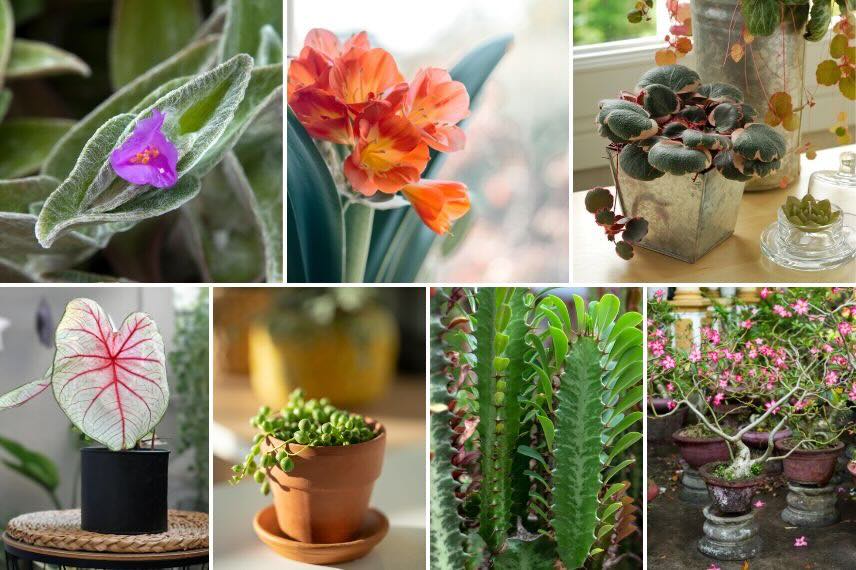
Clockwise: Tradescantia sillamontana, Clivia, Indoor Saxifrage, Adenium obesum, Euphorbia trigona, Senecio rowleyanus, Caladium
- Subscribe!
- Contents
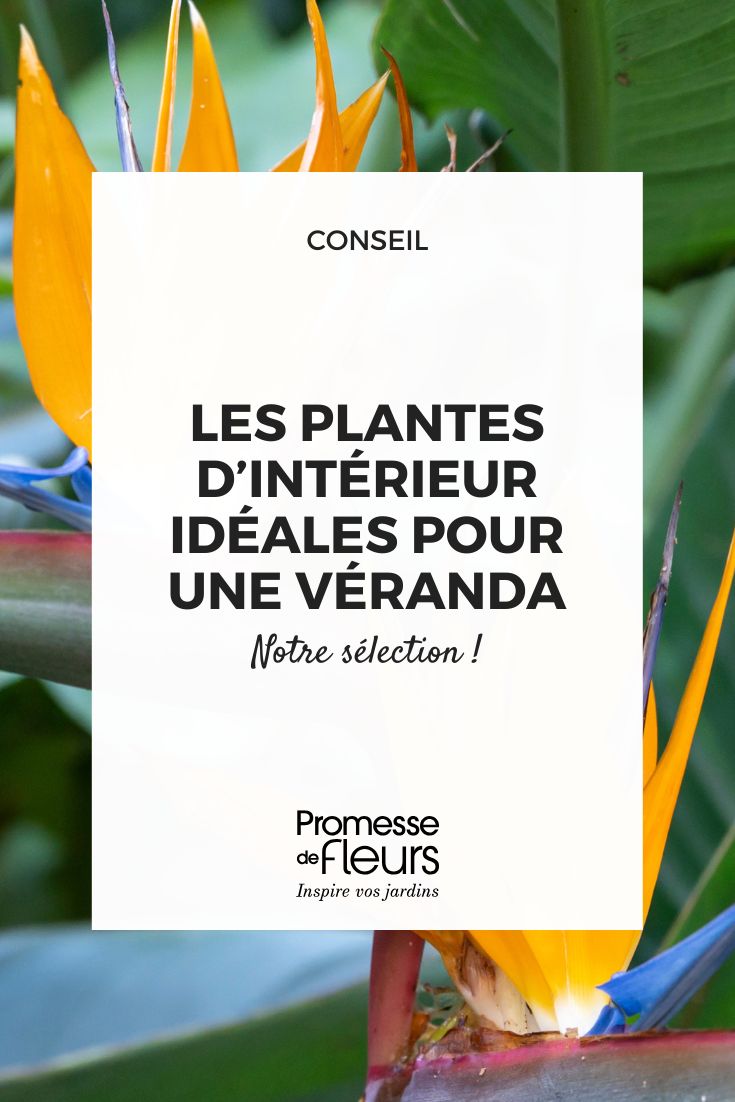































Comments